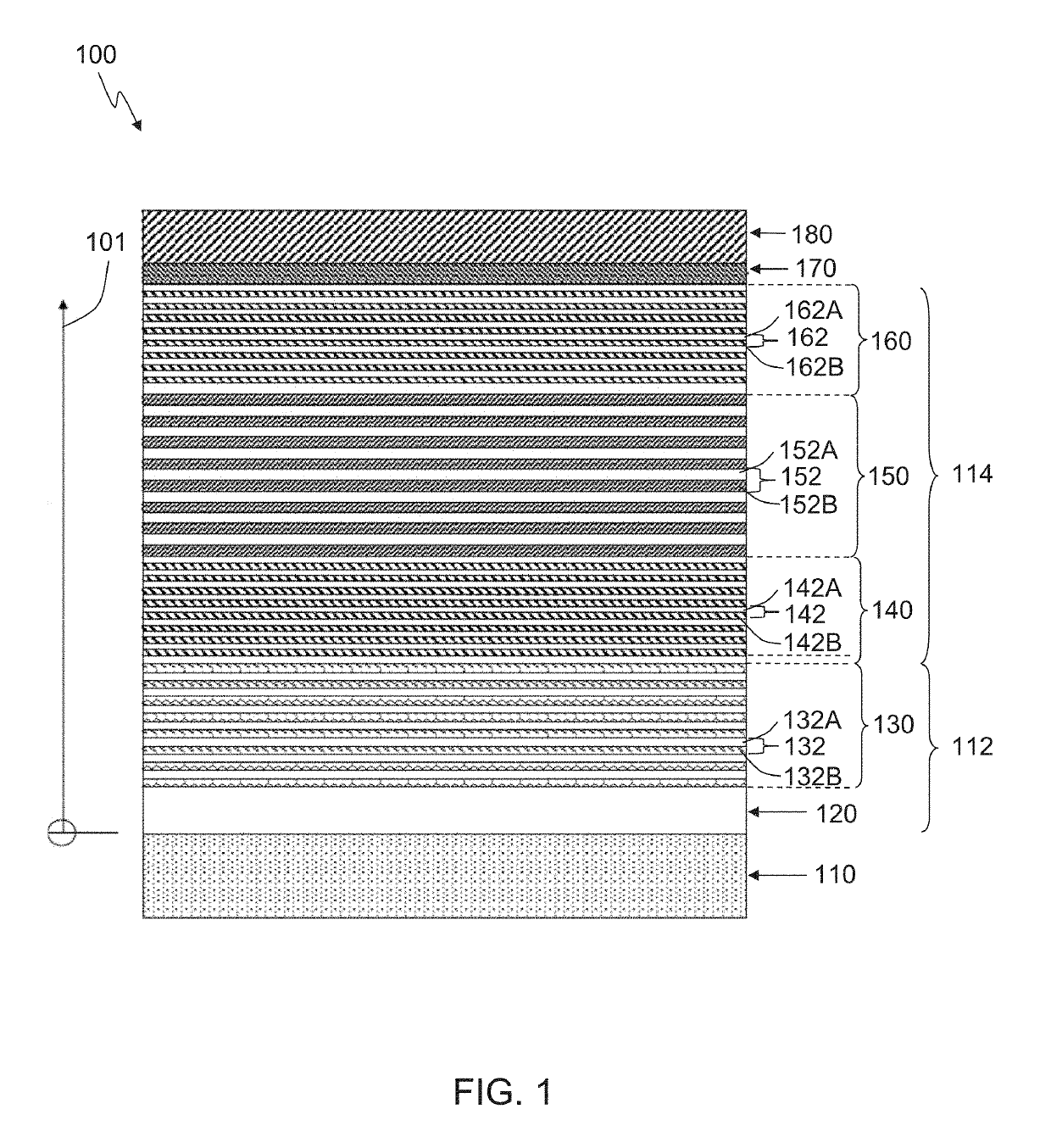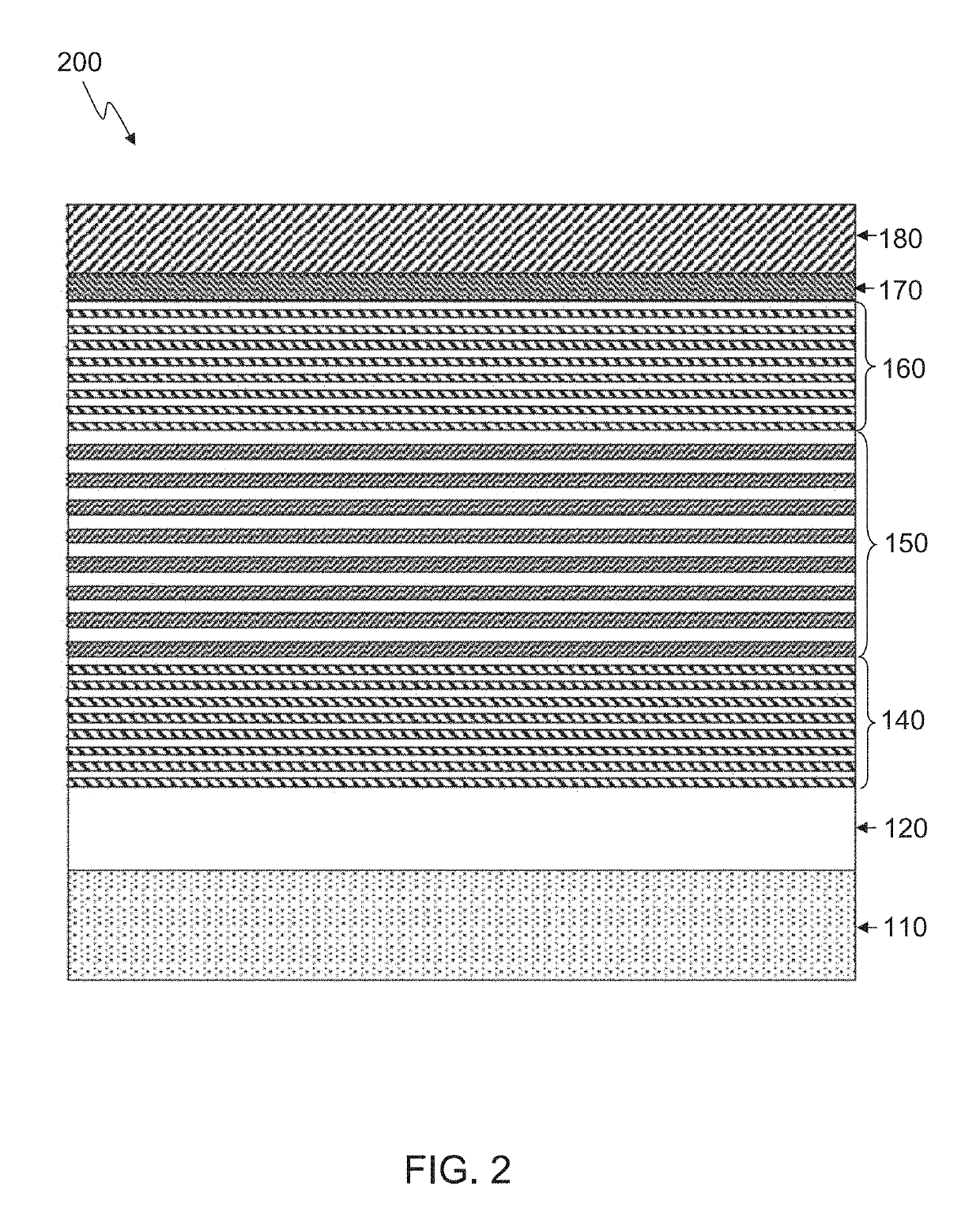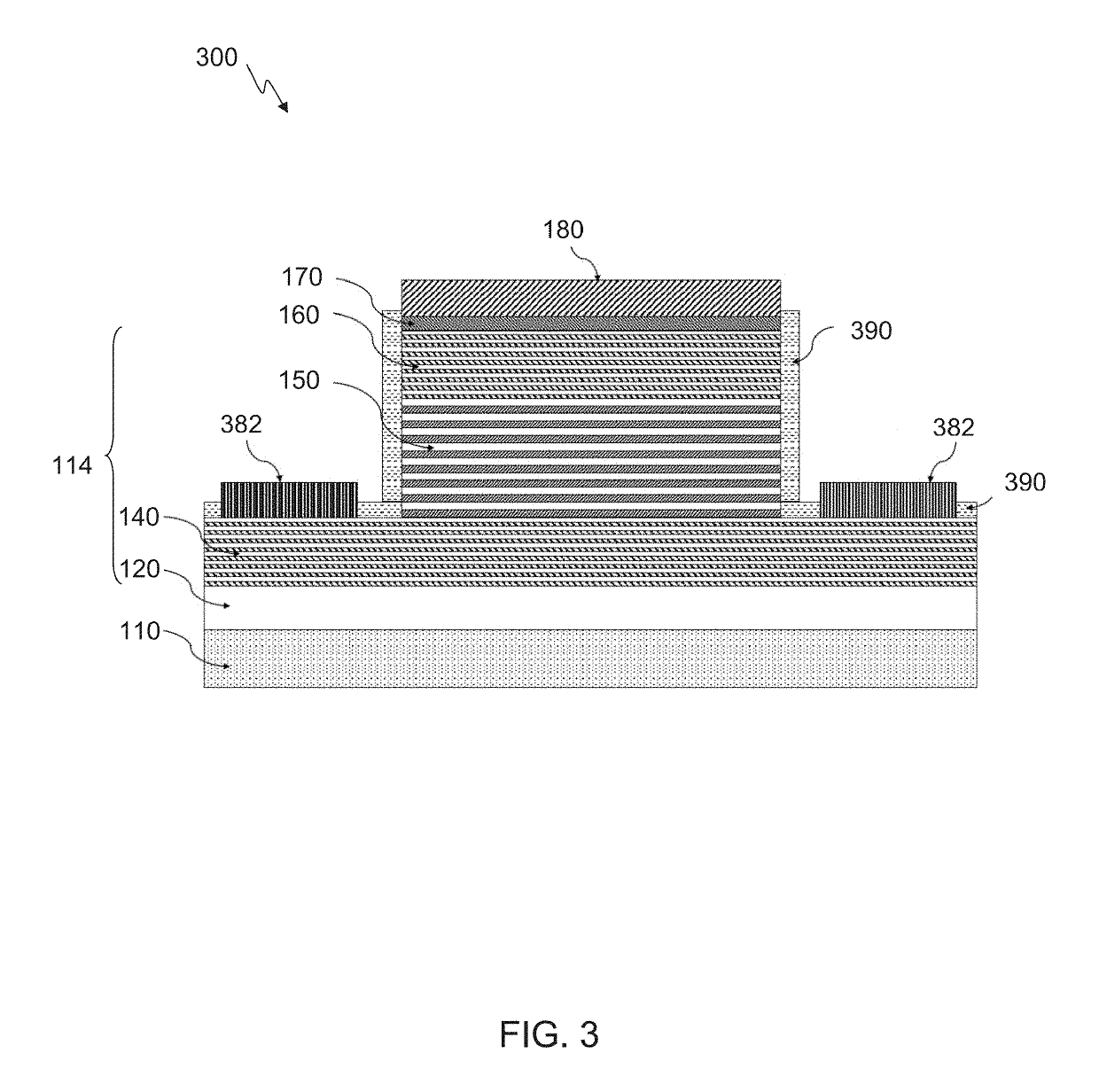Optoelectronic device
a technology of optoelectronic devices and optical emission intensity, which is applied in the direction of semiconductor devices, diodes, electrical apparatus, etc., can solve the problems of low poor optical emission intensity of visible wavelength leds to date, and affecting the concentration of electrons or hole carriers. , to achieve the effect of improving the activation energy of an intentionally doped region and improving the concentration of electrons or hole carriers
- Summary
- Abstract
- Description
- Claims
- Application Information
AI Technical Summary
Benefits of technology
Problems solved by technology
Method used
Image
Examples
second embodiment
[0216]FIG. 2 is a diagram showing a sectional view of a stack 200 for an optoelectronic device according to the present invention. The stack 200 is similar to the stack 100 of FIG. 1 except that the buffer region 112 does not comprise the one or more superlattices 130.
third embodiment
[0217]FIG. 3 is a diagram showing a sectional view of an optoelectronic device 300 according to the present invention. Similar to the stacks 100 and 200 of FIGS. 1 and 2, the optoelectronic device 300 comprises a substrate 110 on which a buffer layer 120 and a semiconductor structure 114 are formed. The semiconductor structure 114 comprises, in growth order, an n-type active region 140, an i-type active region 150 and a p-type active region 160. A p-type contact layer 170 is formed on the p-type active region 160 and a first contact layer 180 is formed on the p-type contact layer 170.
[0218]In the embodiment shown in FIG. 3, the i-type active region 150, the p-type active region 160, p-type contact layer 170 and the first contact layer 180 form a mesa on the n-type active region 140. The mesa shown in FIG. 3 has straight sidewalls. However, in alternative embodiments, the mesa can have angled side walls. The device 300 further comprises a second contact layer 382 formed on the n-type...
fourth embodiment
[0220]FIG. 4 is a diagram showing a sectional view of an optoelectronic device 400 according to the present invention. The optoelectronic device 400 is similar to the optoelectronic device 300 of FIG. 3. However, the optoelectronic device comprises a first lateral contact 486 and a second lateral contact 484.
[0221]The first lateral contact 486 extends partially into the p-type active region 160 from the first contact layer 180. In preferred embodiments, the first lateral contact 486 is an annular shaped protrusion extending from the first contact layer 180 into in the p-type active region 160 and (where applicable) the p-type contact layer 170. In some embodiments, the first lateral contact 486 is made from the same material as the first contact layer 180.
[0222]The second lateral contact 484 extends partially into the n-type active region 140 from the second contact layer 482 formed on a surface of the n-type active region 140. In preferred embodiments, the second lateral contact 48...
PUM
 Login to View More
Login to View More Abstract
Description
Claims
Application Information
 Login to View More
Login to View More - R&D
- Intellectual Property
- Life Sciences
- Materials
- Tech Scout
- Unparalleled Data Quality
- Higher Quality Content
- 60% Fewer Hallucinations
Browse by: Latest US Patents, China's latest patents, Technical Efficacy Thesaurus, Application Domain, Technology Topic, Popular Technical Reports.
© 2025 PatSnap. All rights reserved.Legal|Privacy policy|Modern Slavery Act Transparency Statement|Sitemap|About US| Contact US: help@patsnap.com



